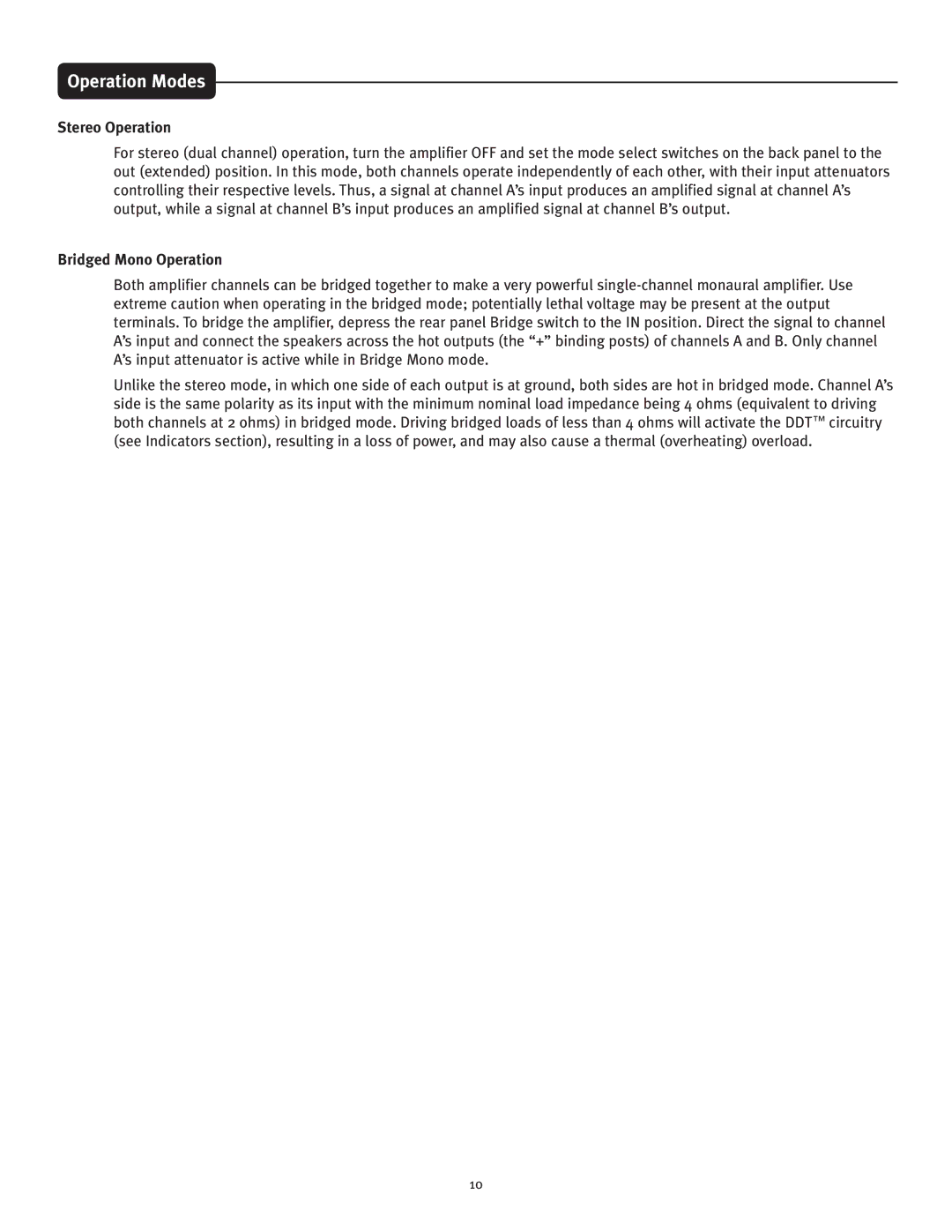Operation Modes
Stereo Operation
For stereo (dual channel) operation, turn the amplifier OFF and set the mode select switches on the back panel to the out (extended) position. In this mode, both channels operate independently of each other, with their input attenuators controlling their respective levels. Thus, a signal at channel A’s input produces an amplified signal at channel A’s output, while a signal at channel B’s input produces an amplified signal at channel B’s output.
Bridged Mono Operation
Both amplifier channels can be bridged together to make a very powerful
Unlike the stereo mode, in which one side of each output is at ground, both sides are hot in bridged mode. Channel A’s side is the same polarity as its input with the minimum nominal load impedance being 4 ohms (equivalent to driving both channels at 2 ohms) in bridged mode. Driving bridged loads of less than 4 ohms will activate the DDT™ circuitry (see Indicators section), resulting in a loss of power, and may also cause a thermal (overheating) overload.
10
